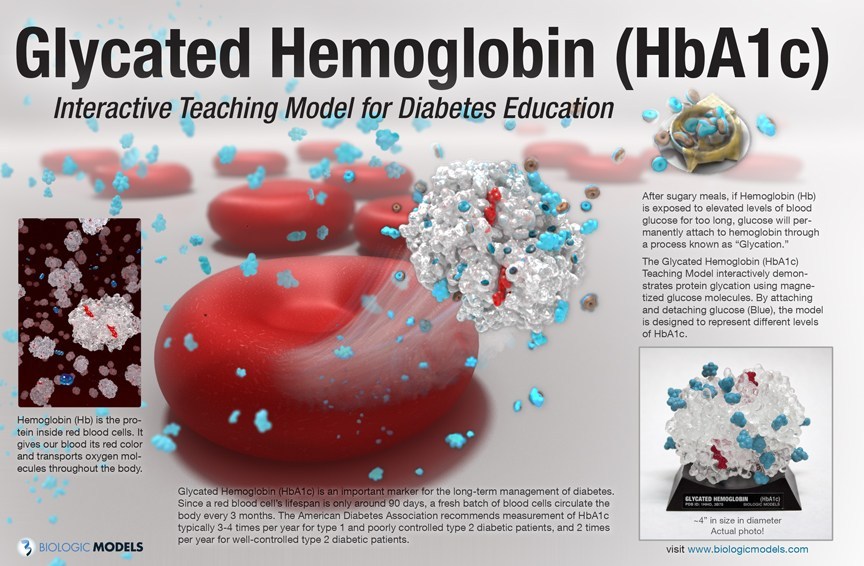
Glycated hemoglobin is a form of hemoglobin that is covalently bound to glucose. It is formed in a non-enzymatic glycation pathway by hemoglobin’s exposure to plasma glucose. It is measured primarily to identify the three-month average plasma glucose concentration and thus can be used as a diagnostic test for diabetes and as assessment test for glycemic control in people with diabetes. The test is limited to a three-month average because the lifespan of a red blood cell is four months. However, since red blood cells do not all undergo lysis at the same time, HbA1C is taken as a limited measure of three months. HbA1c is a measure of the beta-N-1-deoxy fructosyl component of hemoglobin. The origin of the naming derives from Hemoglobin type A being separated on cation exchange chromatography. The first fraction to separate, probably considered to be pure Hemoglobin A, was designated HbA₀, the following fractions were designated HbA₁ₐ, HbA1b, and HbA1c, respective of their order of elution. There have subsequently been many more sub fractions as separation techniques have improved. Normal levels of glucose produce a normal amount of glycated hemoglobin. As the average amount of plasma glucose increases, the fraction of glycated hemoglobin increases in a predictable way. This serves as an indicator that blood sugar is increasing and that action should be taken.